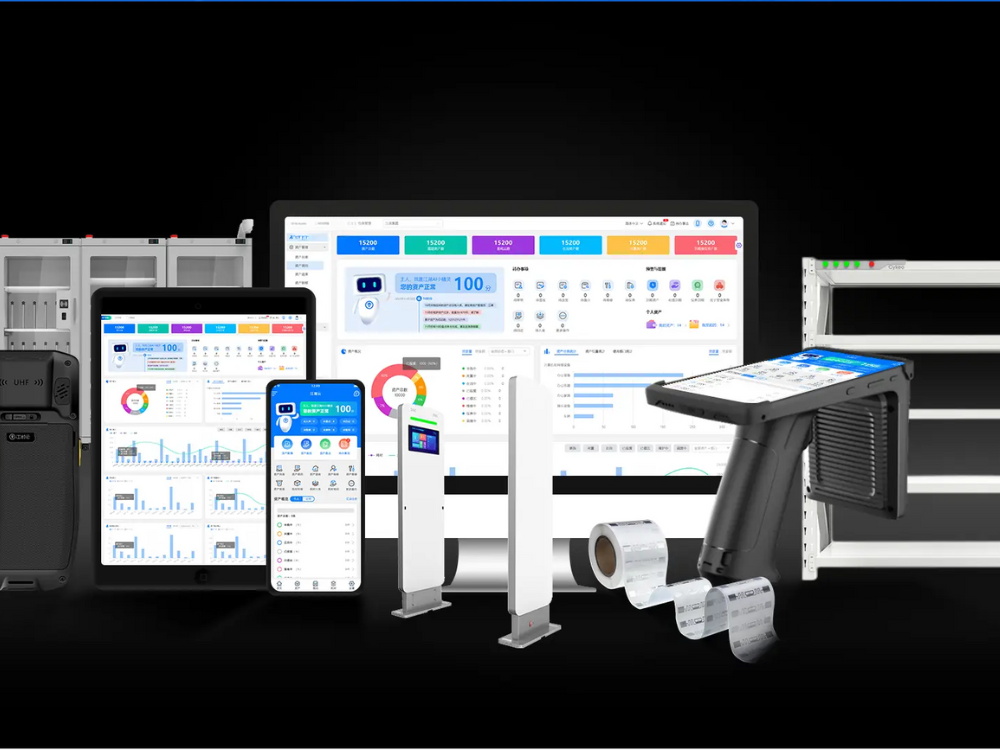
Leveraging RFID Technology for Efficient Asset Management
Table of Contents
Summary
Traditionally, asset management involved laborious manual processes with a high propensity for errors and inefficiencies. However, the advent of RFID technology has introduced a paradigm shift, enabling real-time synchronization between physical assets and management systems. This article explores how RFID tags enhance asset management, focusing on their technological benefits and operational impacts.

Overview of RFID Advantages in Asset Management
RFID technology bridges the gap between physical asset tracking and digital management systems, providing a seamless method for real-time data synchronization. By assigning unique identifiers to each asset, RFID tags facilitate automatic data collection and inventory updates, significantly improving accuracy and efficiency. This technological advancement has proven particularly beneficial for asset-intensive sectors, including utilities and telecommunications.
The Transition from Manual to Automated Systems
Traditional Asset Management Challenges
Historically, asset management relied on manual data entry and record-keeping. This approach often resulted in:
- High Error Rates:Manual entries are prone to human error.
- Inefficient Processes:Time-consuming and labor-intensive.
- Lack of Real-Time Synchronization:Discrepancies between physical asset status and digital records.
The Role of RFID Technology
RFID technology offers a robust solution to these challenges:
- Unique Identification:Each asset is tagged with a unique RFID ID number.
- Automatic Data Collection:RFID readers capture asset information, operator details, and inventory changes.
- Real-Time Updates:Data is transmitted to the central management server through GPRS modules, ensuring immediate database updates.
Advantages of RFID in Asset Management
The implementation of RFID technology provides numerous benefits for asset management:
Benefit | Description |
Enhanced Accuracy | Automated data collection minimizes errors and improves inventory accuracy. |
Real-Time Tracking | Immediate updates to asset information and system records. |
Increased Efficiency | Reduction in manual labor and faster asset verification processes. |
Reduced Resource Waste | Better tracking prevents loss and misuse of assets. |
Cost Savings | Decreased labor costs and minimized asset loss lead to overall cost reductions. |
Application in Asset-Intensive Industries
Industries such as electricity and telecommunications have adopted high-frequency RFID tags to manage their assets more effectively. Key applications include:
- Material Tracking:Real-time monitoring of materials and equipment.
- Equipment Management:Automated updates on equipment status and location.
- Valuable Asset Protection:Enhanced security and tracking of high-value items.
Conclusion
RFID technology has transformed asset management by automating data collection and synchronization, reducing errors, and enhancing operational efficiency. As organizations continue to adopt RFID solutions, the benefits of real-time tracking and improved accuracy will further solidify its role as a crucial tool in modern asset management practices.
Comments
Hot Products

What Is RFID Waste Management
Imagine a city where every trash bin speaks — not literally — but through a tiny chip that tells the system when it’s full, when it’s emptied, and where it went. That’s what RFID waste management is doing today.

What are Bolt Seals and their Applications? | Complete Guide
In global trade and logistics, bolt seals play a crucial role in ensuring cargo security and compliance. These small but powerful devices are designed to lock shipping containers, trailers, and cargo doors with a tamper-evident mechanism.

What is an RFID Card Protector? Benefits, Use Cases, and Buying Guide
RFID technology (Radio Frequency Identification) is everywhere: in your credit cards, ID badges, transit passes, hotel room keys, and more. It offers speed and convenience, but it also opens the door to a new kind of digital theft called “skimming.” That’s where an RFID card protector comes in.

RFID Wristbands for Events: Bulk Buying Guide for Organizers
RFID wristbands for events are becoming the go-to solution for organizers who need faster entry, fraud prevention, and cashless payments at concerts, festivals, and sports venues. Unlike paper tickets or QR codes, these smart wristbands use embedded chips to streamline access, secure transactions, and improve the guest experience.

How RFID Tag on Windscreen Improves Vehicle Access Control and Toll Systems
In today’s fast-paced world, vehicle identification needs to be quick, secure, and contactless. An RFID Tag on the Windscreen provides exactly that — a reliable way to manage toll collection, parking, and gated access without stopping vehicles.

The Benefits of RFID Linen Tags in Commercial Laundry
Managing laundry in hospitals, hotels, or large laundry services is a big job. Each day, thousands of sheets, towels, and uniforms are washed, sorted, and sent back out. But problems like lost linens, sorting mistakes, and manual counting can cost companies a lot of money. For example, mid-sized hotels can lose over $200,000 each year from missing linens.
That’s where RFID Linen Tags come in.
Tags
RELATED BLOGS

What Is RFID Waste Management
Imagine a city where every trash bin speaks — not literally — but through a tiny chip that tells the system when it’s full, when it’s emptied, and where it went. That’s what RFID waste management is doing today.

What are Bolt Seals and their Applications? | Complete Guide
In global trade and logistics, bolt seals play a crucial role in ensuring cargo security and compliance. These small but powerful devices are designed to lock shipping containers, trailers, and cargo doors with a tamper-evident mechanism.

What is an RFID Card Protector? Benefits, Use Cases, and Buying Guide
RFID technology (Radio Frequency Identification) is everywhere: in your credit cards, ID badges, transit passes, hotel room keys, and more. It offers speed and convenience, but it also opens the door to a new kind of digital theft called “skimming.” That’s where an RFID card protector comes in.




